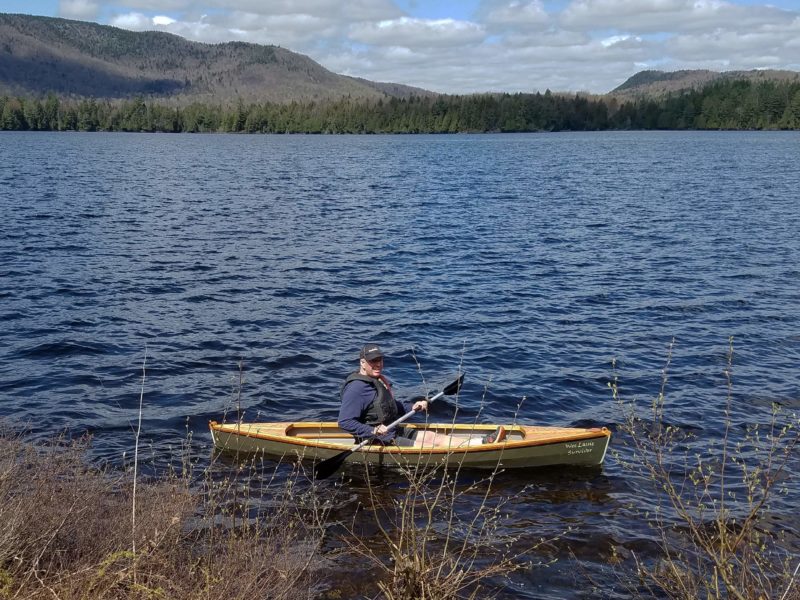 photographs courtesy of James Shamis
photographs courtesy of James ShamisJames made his Wee Lassie frame from oak, cedar, spruce, cherry, and marine plywood. The hull is a vinyl-backed polyester covered with marine varnish.
James Shamis grew up in the Adirondacks, where traveling among the lakes and ponds required boats that were lightly built and easily portaged. In his late teen years, he spent his summers working for Milo Williams restoring antique Adirondack guideboats. While working in Milo’s shop on the north shore of Little Moose Lake, he grew to appreciate the beauty of the guideboats and the pleasure of working with wood.
Among all of the boats Milo had under his care was a Wee Lassie, an undecked canoe designed by Henry Rushton. “I had never seen such a small boat before,” James said. “I thought it was a child’s boat the first time I saw it, and, after many days of prodding on my part, Milo finally let me bring it down and take it for a paddle. I was in love!” James had enjoyed rowing the guideboats, but the Wee Lassie, powered by a double-bladed paddle, was light and quick. And he was on his own. “No room for a guest, just me and the water.”
James made up his mind that he’d someday have a Wee Lassie, but the years slipped by and he never found one he could buy and restore. Still, his fondness for the canoe endured for decades.
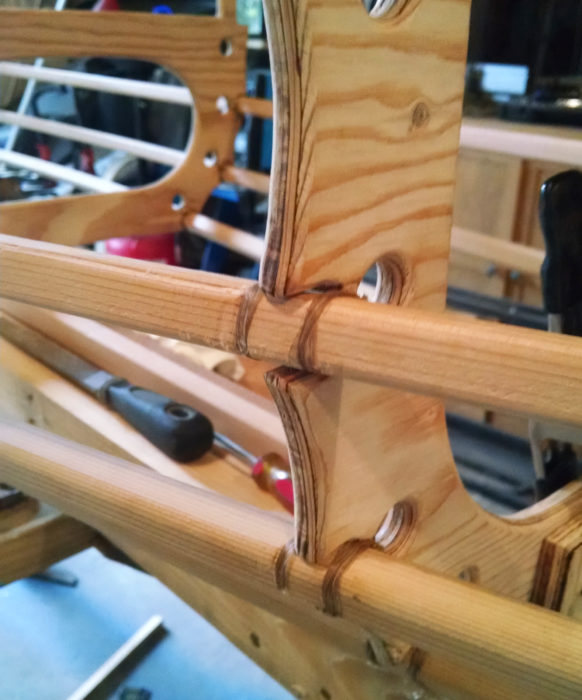
James preferred lashing the frame together over the messier work of using screws and epoxy.
In 2015, doctors discovered James had a vocal-cord cancer. Glottic cancers respond well to radiation treatment and are almost always curable, but the health scare was a wake-up call for James. During his radiation treatments, his thoughts were drawn to his teenage years and the time he spent paddling the Wee Lassie on Little Moose Lake. The memories were his refuge during a difficult time, and after a few rounds of radiation he decided to bring a Wee Lassie back into his life—he’d build his own.
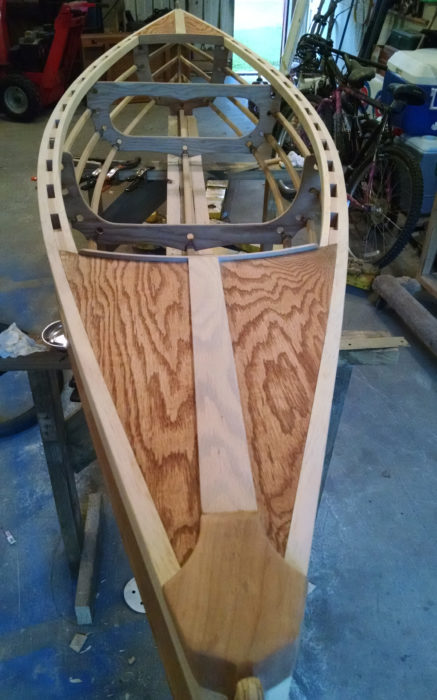
James added decks as reminders of the Adirondack guide boats he used to work on as a teenager.
Rushton’s original Wee Lassie, built in 1893, was 10′6″ long, weighed just 20 lbs, and was a delicate lapstrake construction of cedar planks, just 3/16″ thick, on closely spaced steam-bent oak frames. Building a replica true to the original would require the skills of an experienced craftsman. For a first boatbuilding project, James was drawn to Dave Gentry’s version of the Wee Lassie, an adaptation for skin-on-frame construction that would be quick to build, require nominal skills, and yet be as light as the original.
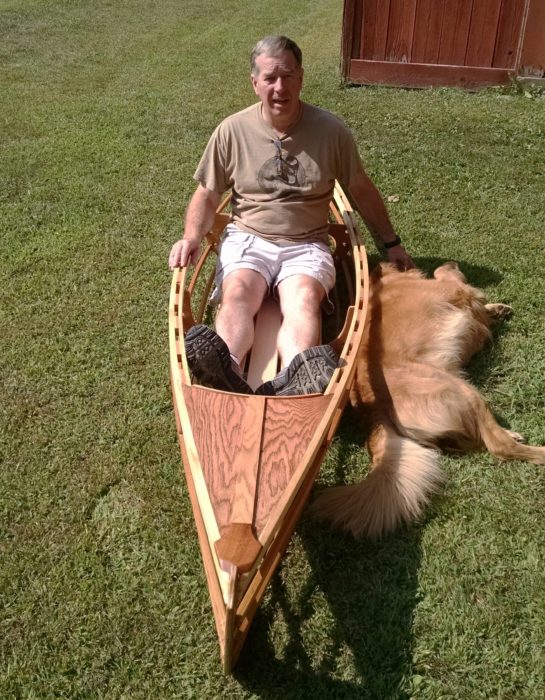
James tries the frame on for size before skinning the canoe. Cody imagines swimming alongside.
In July 2015, James had his last radiation treatment and rested for just two days before beginning building his Wee Lassie. Working in his barn, he got off to a slow start as he gradually regained his strength. When he would return to the house after working for a spell on the canoe, his wife would ask, “What are you doing out there in the barn?” “Building a boat,” he’d reply. She would laugh and say, “Oh, okay….” Weeks went by before she came out to the barn and, to her surprise, there was indeed a boat taking shape there.
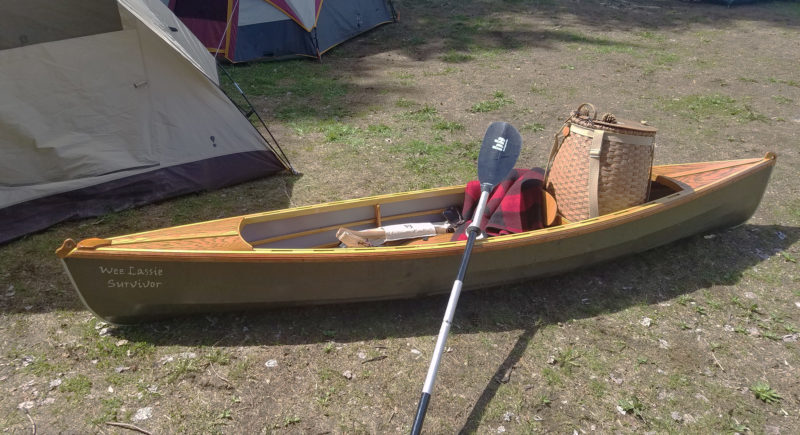
James made a woven Adirondack pack basket as a fitting accompaniment to his canoe.
In the Gentry plans, there are two options for fastening the longitudinals to the plywood frames: lashings or screws and epoxy. James opted for lashings. The nylon artificial sinew gave the connections flexibility in addition to great strength. He departed from the plans to add decks fore and aft to give his Wee Lassie a touch of Adirondack-guideboat class. This decorative touch brought the weight to 25 lbs, a bit over the 19 lbs specified in the plans, but still an easy carry.
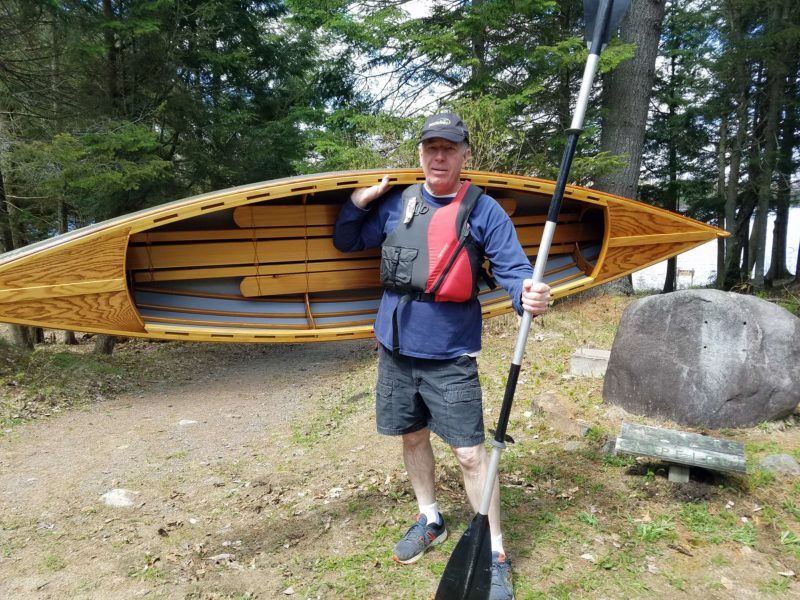
James’s version of the Gentry Wee Lassie came in at 24 lbs, an easy carry in the backcountry.
James finished the canoe in three months, christened it WEE LASSIE SURVIVOR, and took his first outing on the waters of Lake Delta, not far from his home in Rome, New York. The moment she was afloat transported him back to his summers paddling Milo’s Wee Lassie on Little Moose Lake.
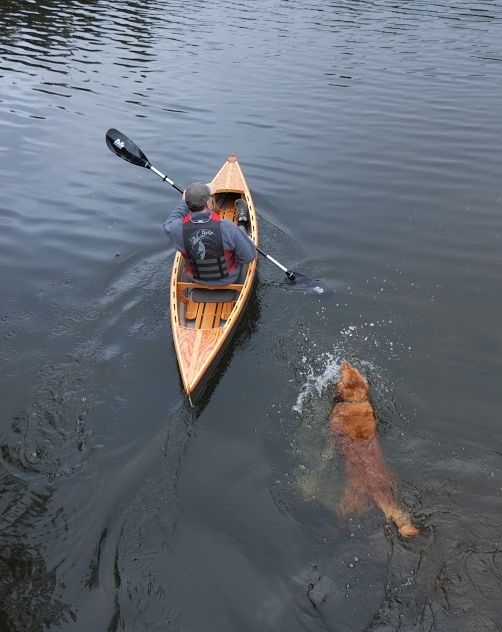
Cody heels dutifully by land and by lake.
Winter descended not long after that first October outing and WEE LASSIE SURVIVOR went back into the barn. The following spring, James joined a Boy Scout canoe-camping trip. He had brought his dog, a golden retriever named Cody, but expected him stay ashore. James was well on his way when he discovered Cody was swimming in SURVIVOR’s wake. The two of them have since enjoyed many small ponds together, one paddling and the other dog-paddling.![]()
Have you recently launched a boat? Please email us. We’d like to hear about it and share your story with other Small Boats Monthly readers.
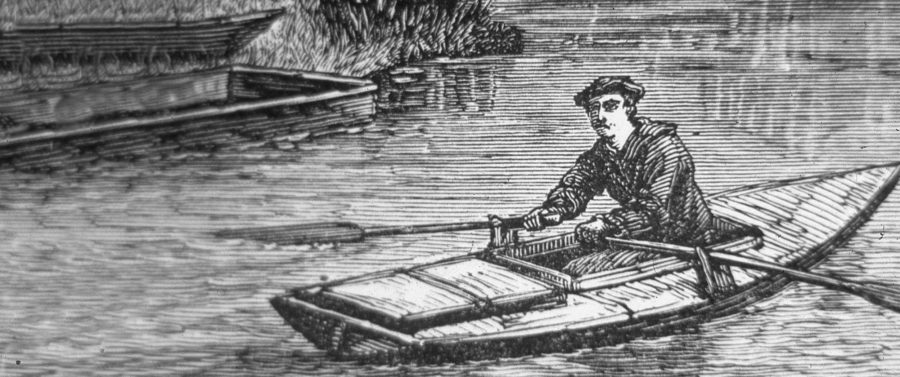

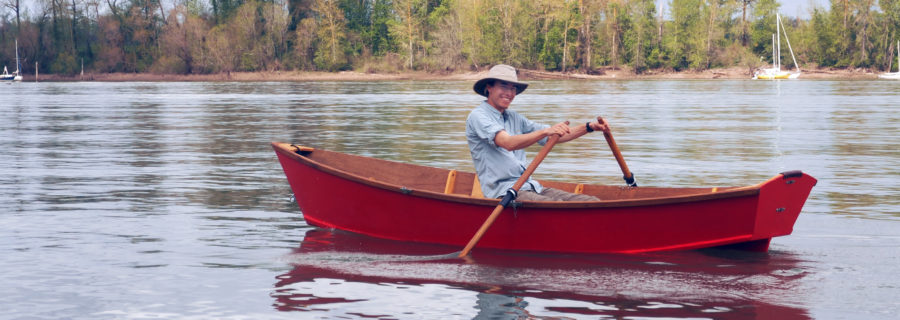
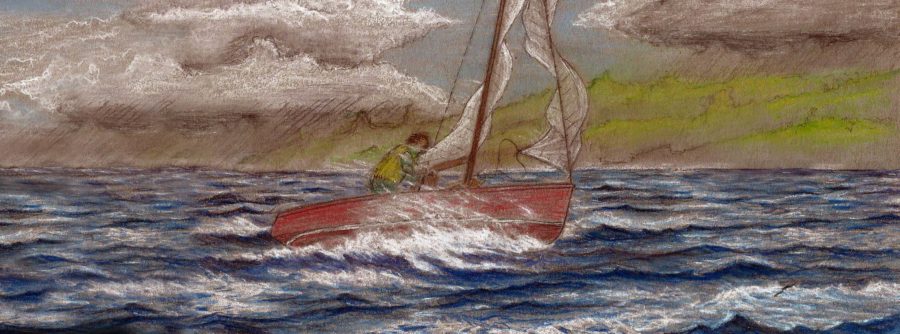
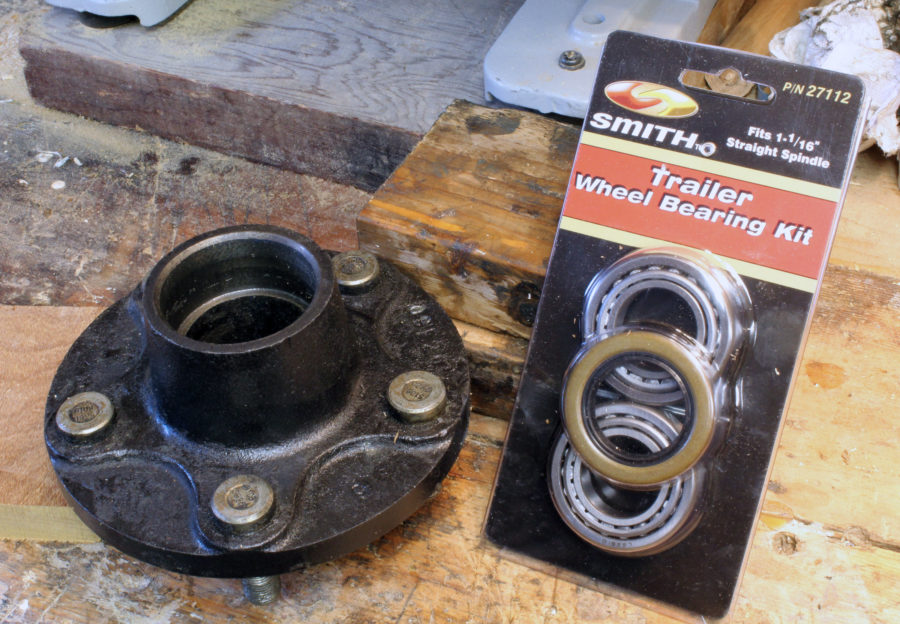
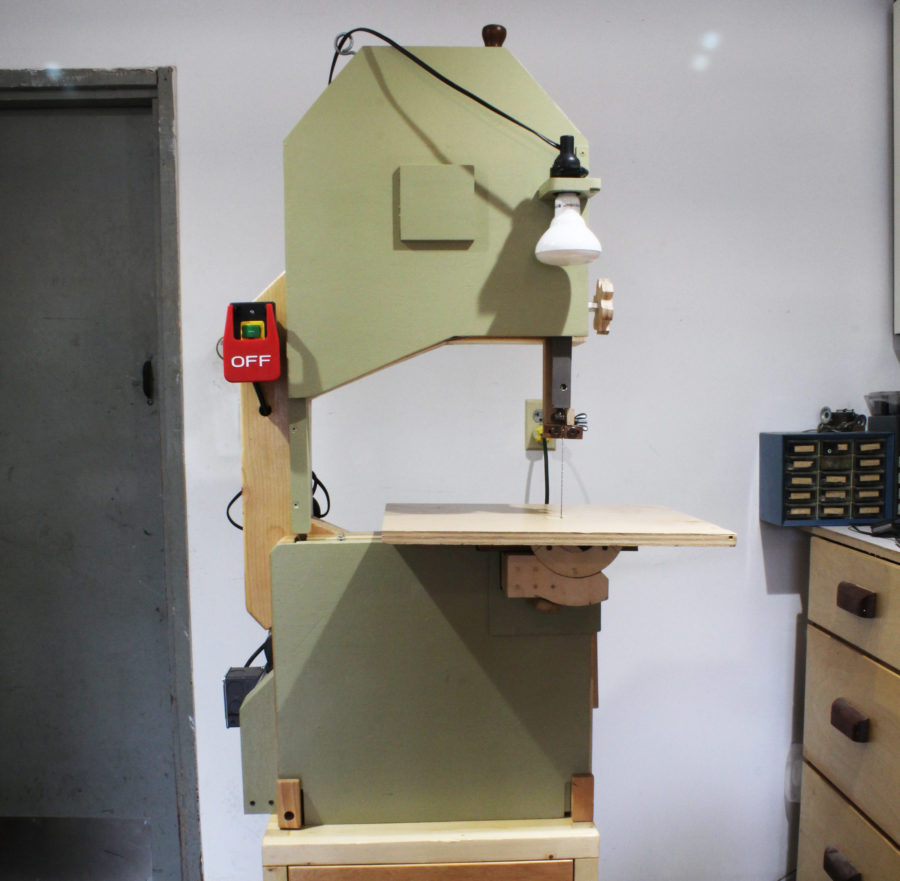
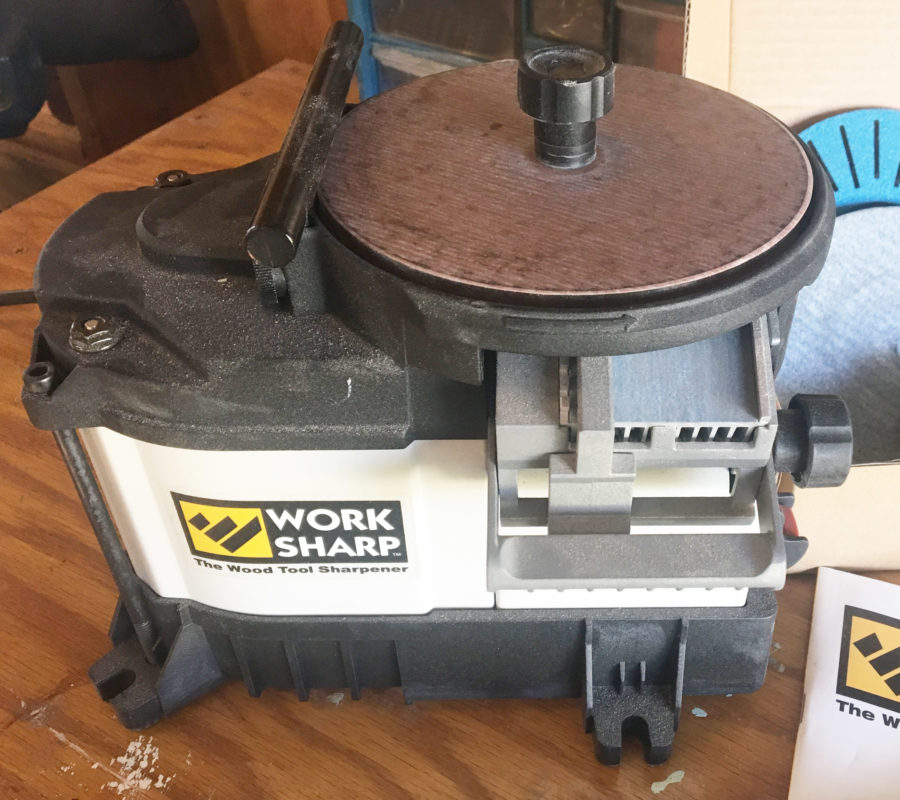
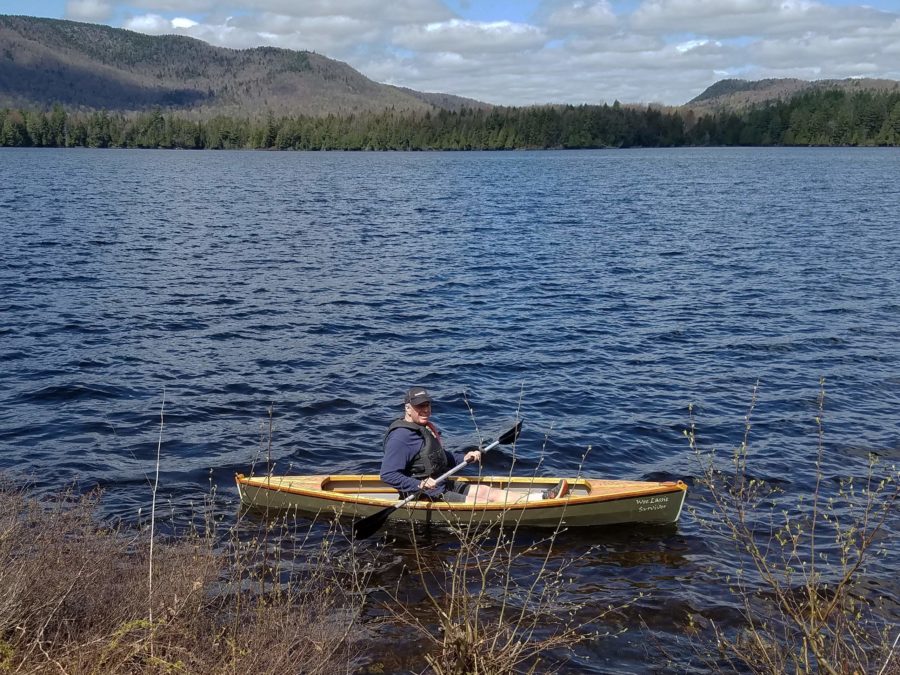
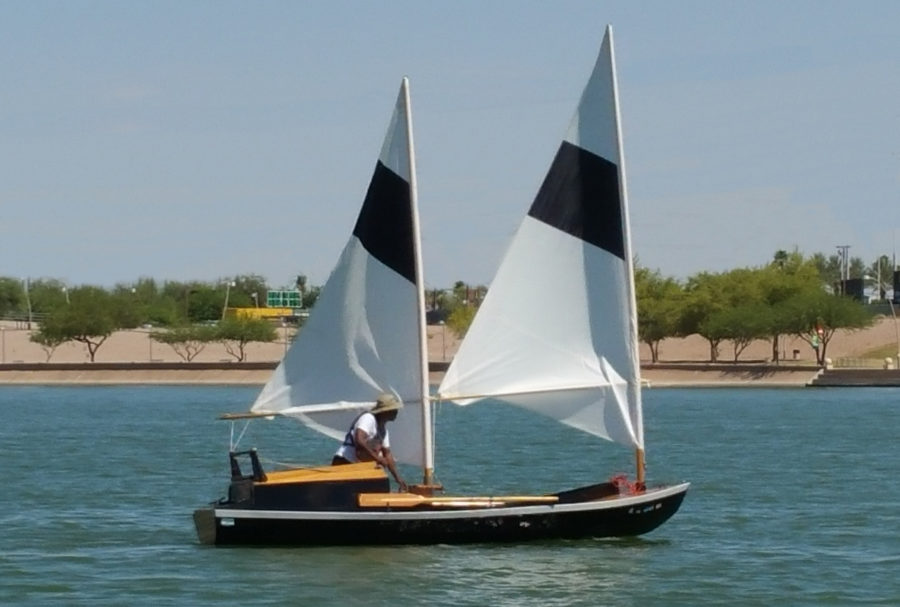
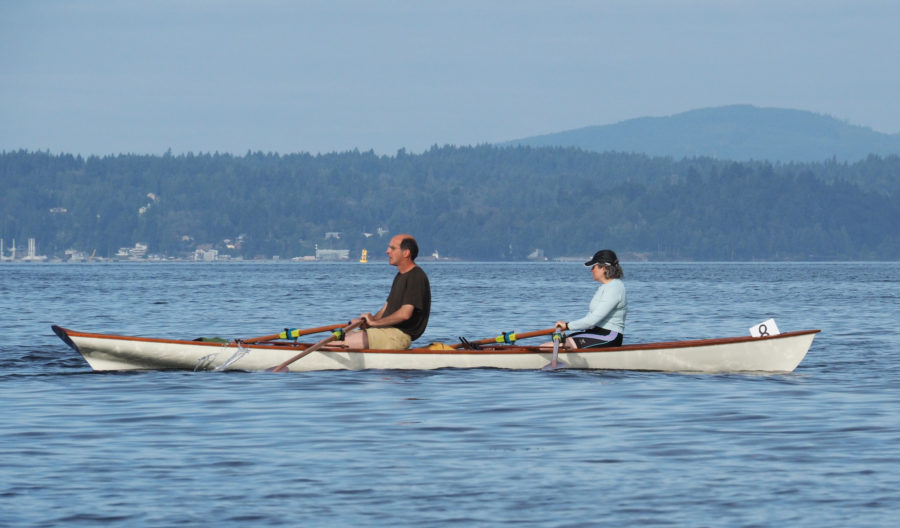
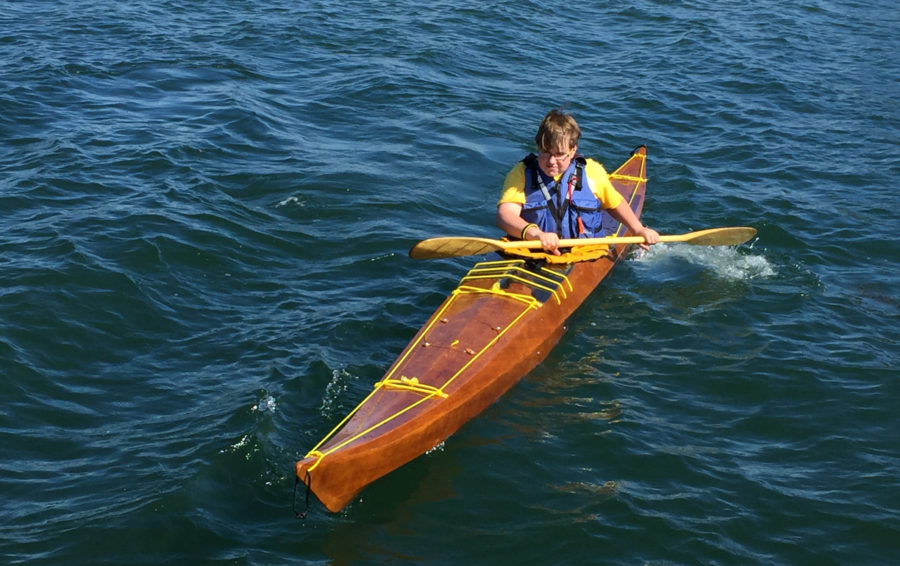
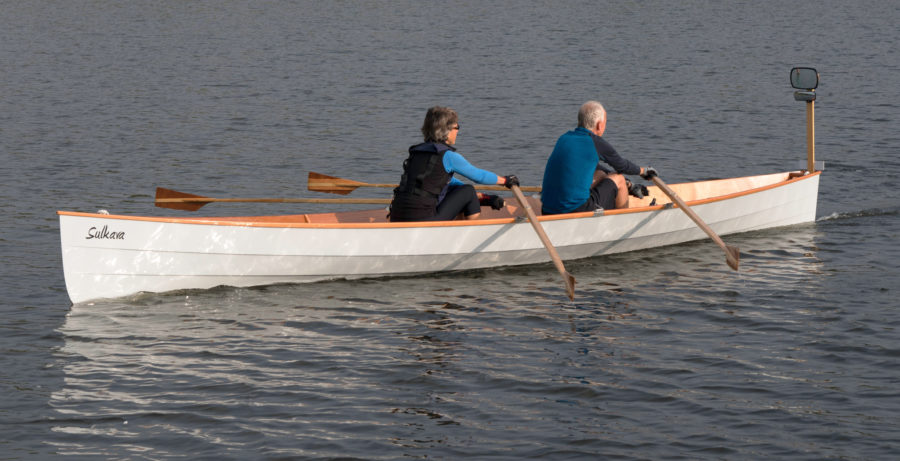
Great article! I built the 12′ Nymph by Nick Shade, love the boat. I’ve paddled long British sea kayaks since the ’80s and this little cedar boat has become my “go-to” boat in all but the roughest waters here on the Jersey coast. Handy on and off the truck and will handle more bumpy water than you would think. The smallest boat that can be used safely is the one that gets used the most. Keep on paddling, James.
Yes, keep paddling. I, too, was struck down with cancer, one that compressed my spinal column; this required surgery to remove the cancer combined with radiation treatment. To get to the cancer it required the virtual destruction of three vertebrae, now held together by stainless-steel plates and large screws. To focus my my mind during the times when I was required to wait, wait, wait, and lie still, I recalled the various articles in WoodenBoat about Iain Oughtred’s Concordia Yawl. So, step by step, I constructed a virtual boat and by the time of my last phase of radiation, the virtual boat was built ready for final finishing. Could I turn this virtual boat into the real thing? Regretfully, not, as I was a paraplegic with strict instructions not to lift anything beyond very light weights!
The discipline of virtually identifying the component selecting it from my stash of wood then cutting and fitting it kept my mind focused and many times my nurse had to ask me to rejoin the medical procedure going on at the time.
Small Boats Monthly has also been my companion on my iPad and together with WoodenBoat has been a main stay of my recovery and rehabilitation. Please continue to share your stories, as we do not know how they may help others deal with issues in their life and inspire them to achieve things that seem so far away.
Yes, I am out of my wheel chair and have learned to walk again. Thank you, Small Boats Monthly and my fellow lovers of wooden boats.
Nice story, thanks for sharing. Might have to build one and see if it gets picked over the plastic yak 🙂
Cheers
Kent
For some 20 years I’ve had a 10’6″ Hornbeck Kevlar canoe that weighs in at 17 lbs. Yeah, it has a bit of wood in it: gunwales, pulley bracket off the stern for a small anchor, and a wood jam cleat for the anchor rope next to the paddling-position seat cushion. That anchor setup makes it easy to fish a lee shore if your anchor rope is long enough for the depth of the water.
I’ve carried it into places in the West that seldom, if ever, see a boat of any kind. That’s a real point for having such a lightweight vessel. You are no longer confined by available launch ramps. And it can be carried aboard a 14′ to 16′ boat or motor vehicle to places very remote and near to the “parking place” of the big boat or car but previously accessible on foot. How many places do you know that have water over there behind those trees only explorable on foot?
Also, such lightweight boats are practical to tow on two dolly wheels with a 10-speed modern bike and carry a bunch of lightweight camping gear. If a portage has good enough path, take the wheels with you so you can easily load your gear in the canoe and do the portage in one trip.
One point to mention: You must be light and agile to get aboard such a vessel from the side, like at a dock, without it tipping over sideways. Try this only wearing things that can get wet. With a beam of 30″ I can approach from the rear straddling the sides with my legs and then when over the paddling position do a sit down with hands on the gunwales and swing my legs up and over the sides. Just you make sure when seated in the canoe that it is near enough to the water so you can push off from the seated position. Light weight also means it is easy for one person to get on top of a car roof for transport.
Ed Weldon, Bay Area, CA
A note about George Washington Sears “Nessmuk” would have been appropriate in this article.
James,
Wonderful story, wonderful boat.
Many thanks for sharing